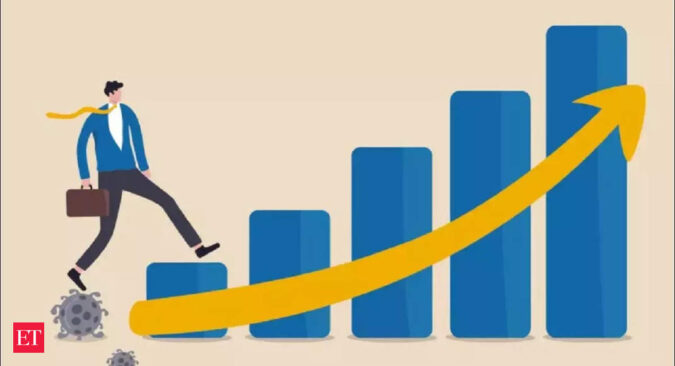Growth rates came in higher than analyst expectations boosted by government and private capital spending even as private consumption remained sluggish.
The Gross Value Added (GVA) growth in the manufacturing sector accelerated to 4.5 per cent in the March quarter as against 0.6 per cent a year ago.
GVA growth in the mining sector was 4.3 per cent in the fourth quarter compared to 2.3 per cent in the same quarter of the previous fiscal. The construction sector grew 10.4 per cent in the March quarter, up from 4.9 per cent in the corresponding period of 2021-22. The agriculture sector growth accelerated to 5.5 per cent from 4.1 per cent.
However, there was a decline in both exports and imports, clouding the economic outlook. Barring any monsoon-related risks or geopolitical uncertainties, India’s economy may surpass the initial estimate of 6.5 per cent growth for the current fiscal year (April 2023 to March 2024).
Private consumption, which accounts for nearly 60% of the economy, grew 2.8% year-on-year compared with a revised 2.2% in the previous quarter, while capital formation, an indictor of investment, rose 8.9% from a downwardly revised 8%.Federal government spending, constituting about 10% of GDP, rose 2.3% year-on-year in the latest quarter, compared with a revised 0.6% contraction in the previous quarter.Here is a quick look at what the experts think of the Indian economy’s performance:
1. Sonal Varma & Aurodeep Nandi, Nomura:
The coincident growth indicators as of early Q2 paint a mixed picture. Data for April suggests healthy consumption, services and investment growth. There was an uptick in new investment projects (CMIE) as of Q1 2023, but the increase is largely driven by the transport sector.
On the other hand, early indications for May suggest that passenger vehicle demand is subdued for small cars and concerns are growing for MHCV sales. Recent corporate results suggest a lower topline and higher bottom line; the latter is due to lower input costs, with FMCG companies suggesting continued pressure from weaker rural demand (inflation effects), and IT companies have scaled back revenue and hiring guidance for FY24 (global effects), which will weigh on services exports, going forward.
2. Aditi Nayar, Chief Economist, ICRA:
GDP expansion in Q4 FY2023 was appreciably higher than expected while remaining uneven and confirming the hopes of a sequential pickup in the pace of growth of economic activity to 6.1 per cent from the bottom of 4.5 per cent seen in Q3 FY2023.
Icra has projected growth of real GDP in FY24 at 6 per cent, with a downside risk of up to 50 basis points in the event that an El Nino affects the monsoon rains.
3. Sakshi Gupta, Principal Economist, HDFC Bank
GDP growth surprised coming in significantly higher than expected for the fourth quarter, taking the full-year number to 7.2 per cent in 2022-23. Growth was led by higher-than-expected agriculture growth and strong growth in services. Almost 70 per cent of the growth increase came from the services sector alone.
The GDP data does validate the recent growth optimism for India, despite global headwinds. This is not to say that the growth outlook is without risks – particularly with regards to the monsoon progress and recession risks globally. We expect GDP growth at 5.8-6 per cent for FY24.
4. Radhika Rao, Senior Economist, DBS Bank, Singapore:
The Indian economy grew 6.1 per cent in Q4, surpassing expectations. Fixed capital investments and net exports were key contributors whilst private consumption was subdued. Lift from supply-side drivers was more broad-based, led by manufacturing. A strong GDP beat provides the central bank the headroom to extend its pause in June
Most lead indicators for Q1FY24 are still holding up, including GST collections, PMIs (higher services than manufacturing), industry credit growth, steel & cement output, and narrower trade shortfall, amongst others. At the same time, there have been few pockets of softness (freight, tractor sales etc.)
5. Rajani Sinha, Chief Economist, CareEdge:
The growth is expected to moderate to 6.1 per cent in FY24 from 7.2 per cent in FY23. This is due to a combination of factors such as normalisation of the base, slowing external demand and uncertain financial conditions. As the post-pandemic spurt in economic activities cool, we could witness some moderation in domestic urban demand. The still high core inflation could restrain spending on discretionary items by urban consumers.
However, a gradual pick-up in rural demand on the expectation of lower food inflation and higher rural wages will support overall consumption demand. Having said that, the development of El-Nino conditions during the monsoon season remains a key risk for agriculture production and rural income. Overall, the share of private consumption in GDP could witness a marginal fall.
